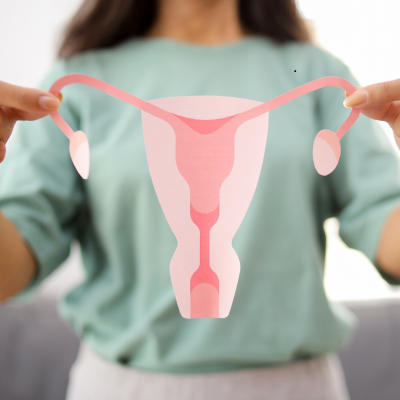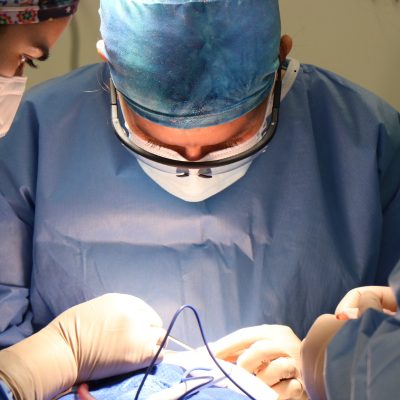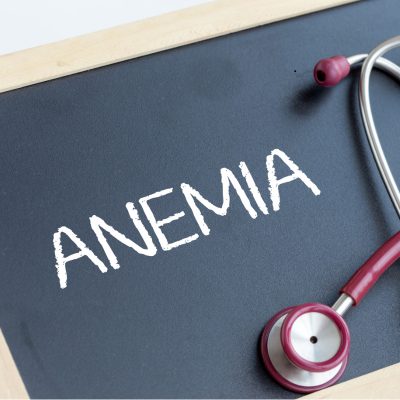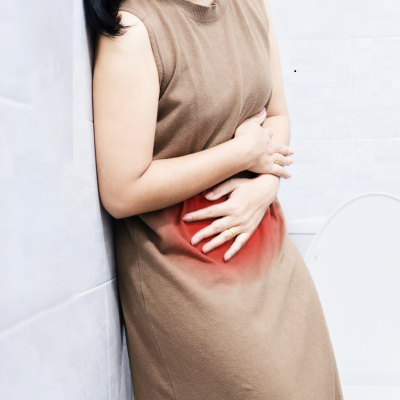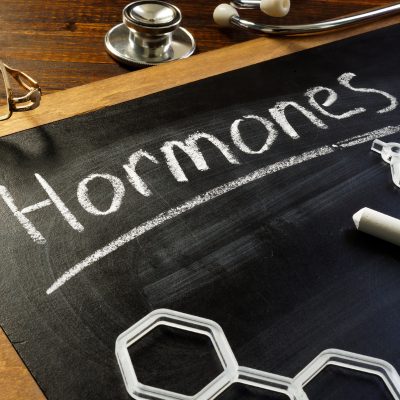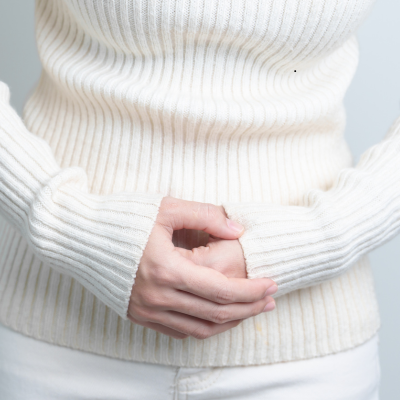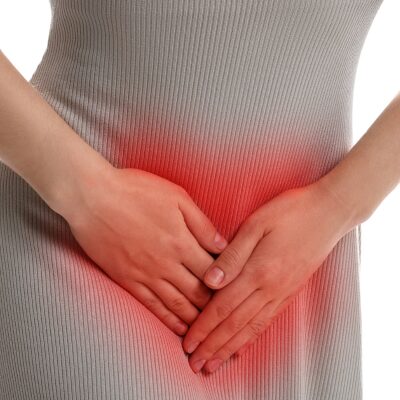I Have PCOS – Now What?
Hearing the words “You have PCOS” can feel overwhelming. You might be relieved to finally have answers for your symptoms, or anxious about what it all means. At Cherokee Women’s Health, we want you to know that a PCOS diagnosis isn’t the end of the road. It’s the beginning of taking control of your health. Here’s what you need to know, and what you can do next. Understand Your Diagnosis Polycystic 0vary syndrome (PCOS) is a hormonal condition that affects how your ovaries work. It can cause a range of symptoms, including: Irregular or missed periods Excess hair growth (especially on face, chest, or back) Acne or oily skin Thinning hair on your scalp Weight gain or trouble losing weight Difficulty getting pregnant Darkened skin patches But every woman’s experience is different. You may have just a few symptoms, or many. Know You’re Not Alone PCOS affects up to 1 in 10 women of reproductive age. It’s one of the most common hormone-related conditions in women. You’re not alone, and help is available. Focus on a Healthy Lifestyle While there’s no cure for PCOS, lifestyle changes can make a big difference in how you feel. Small steps can help manage symptoms and lower your risk of complications like diabetes and heart disease. Consider these strategies: Healthy Eating: Choose whole, unprocessed foods. Focus on lean proteins, vegetables, fruits, whole grains, and healthy fats. Reducing refined carbs and sugars may help with weight management and insulin levels. Exercise Regularly: Aim for at least 30 minutes of activity most days. Exercise helps regulate insulin, supports weight loss, and boosts mood. Manage Stress: Stress can affect hormones. Try yoga, meditation, or other relaxation techniques. Get Enough Sleep: Poor sleep can worsen hormone imbalances. Aim for 7-9 hours each night. Talk to Your Provider About Treatment Options Your treatment plan should be tailored to your unique symptoms and goals, such as regulating periods, reducing hair growth, improving acne, or getting pregnant. Possible treatment options include: Birth Control Pills: Help regulate periods, lower testosterone levels, and improve acne. Metformin: A medication that can improve insulin resistance and help regulate cycles. Medications for Ovulation: If you’re trying to conceive, medications like letrozole or clomiphene may help. Hair and Skin Treatments: Medications or procedures can help reduce excess hair growth and acne. Keep an Eye on Long-Term Health PCOS can increase your risk of other health issues, including: Type 2 diabetes High cholesterol High blood pressure Sleep apnea Endometrial cancer Regular checkups with your OB/GYN are crucial. Together, they will monitor your health and take steps to reduce these risks. Take Care of Your Emotional Health Living with PCOS can be stressful. Many women experience anxiety, depression, or body image concerns. Don’t hesitate to talk to us, or a mental health professional if you’re struggling. Your mental health is just as important as your physical health. We’re Here for You A PCOS diagnosis doesn’t define you. With the right support and a personalized treatment plan, you can manage symptoms and protect your long-term health. At Cherokee Women’s Health, we specialize in women’s hormonal health and are committed to helping you feel your best. Have questions about your PCOS diagnosis? Schedule an appointment today or call us at 770.720.7733.
PCOS: Truths and Misconceptions
Polycystic ovary syndrome, or PCOS, is one of the most common hormonal disorders affecting women of reproductive age. Yet despite how prevalent it is, PCOS remains surrounded by confusion and myths. At Cherokee Women’s Health, we believe that understanding the truth about PCOS is crucial for managing symptoms and improving quality of life. Let’s separate fact from fiction by addressing some common misconceptions. Common PCOS Misconceptions Misconception #1: PCOS Means You Have Ovarian Cysts The Truth: The name “polycystic ovary syndrome” is misleading. Not all women with PCOS have cysts on their ovaries. The term comes from the appearance of the ovaries on ultrasound, which may show multiple small follicles (not true cysts) that look like a string of pearls. Diagnosis is based on a combination of symptoms, lab tests, and imaging, not just cysts. Misconception #2: You Can’t Get Pregnant if You Have PCOS The Truth: Many women with PCOS conceive naturally or with medical assistance. While PCOS can cause irregular ovulation, it does not automatically mean infertility. Lifestyle changes, medications, and fertility treatments can help many women achieve pregnancy. Misconception #3: Only Overweight Women Get PCOS The Truth: PCOS affects women of all shapes and sizes. Although being overweight can exacerbate symptoms, many women with PCOS are of average weight or even underweight. Genetics and hormones, not weight alone, play significant roles in PCOS development. Misconception #4: Irregular Periods Are the Only Symptom The Truth: PCOS is a complex condition with a variety of symptoms, including: Irregular or absent menstrual cycles Excess hair growth (hirsutism) Acne Thinning hair on the scalp Weight gain or difficulty losing weight Darkening of skin, especially around neck folds or underarms Mood changes Difficulty getting pregnant Some women have only a few symptoms, while others experience many. Misconception #5: PCOS Isn’t a Big Deal The Truth: PCOS is a lifelong health condition that can increase the risk of: Type 2 diabetes High blood pressure High cholesterol Sleep apnea Endometrial cancer Anxiety and depression Early diagnosis and management are key to preventing long-term complications and maintaining overall health. Misconception #6: Birth Control Pills Cure PCOS The Truth: Birth control pills can help regulate periods and reduce symptoms like acne and excess hair, but they don’t “cure” PCOS. There is currently no cure for PCOS, but symptoms can often be managed successfully through lifestyle changes, medication, and personalized care. Misconception #7: You Did Something to Cause PCOS The Truth: PCOS is not your fault. Its exact cause isn’t fully understood, but it’s believed to involve a combination of genetic and environmental factors. Women with a family history of PCOS are at higher risk. You didn’t cause your PCOS by something you did or didn’t do. Take Charge of Your Health Living with PCOS can feel overwhelming, but you’re not alone. Our expert and compassionate team at Cherokee Women’s Health specializes in diagnosing and treating PCOS. We’re here to help you understand your body, manage symptoms, and protect your long-term health. If you suspect you might have PCOS or have questions about your symptoms, schedule an appointment with us today. Let’s work together to help you feel your best. Call us today at 770.720.7733 or simply schedule an appointment online.
Preventing Pelvic Organ Prolapse Again After Surgery
Can pelvic organ prolapse return after you had surgery to repair it? Pelvic organ prolapse (POP) surgery can significantly improve your comfort and quality of life but even after a successful repair, yes, prolapse can return over time. The good news is, there are steps you can take to help protect your pelvic floor and lower the chances of recurrence. Prolapse Can Come Back After Surgery Surgery repairs weakened tissues, but it can’t completely reverse all the factors that caused prolapse in the first place. Aging, ongoing pressure on your pelvic floor, chronic coughing, constipation, heavy lifting, and genetic factors can all contribute to prolapse returning. Steps to Help Prevent POP from Coming Back Here’s how you can support your pelvic health after surgery: Follow Your Surgeon’s Instructions: After surgery, follow lifting restrictions and activity guidelines carefully. Healing tissues need time to get strong. Avoid Heavy Lifting: Try not to lift anything heavier than your surgeon recommends—even long-term. Heavy lifting increases pressure on the pelvic floor. Manage Chronic Cough: If you have allergies, asthma, or a smoker’s cough, talk with your doctor about managing symptoms to reduce strain on pelvic tissues. Prevent Constipation: Eat a high-fiber diet, stay hydrated, and exercise regularly to keep bowel movements soft and regular. Straining can stress the pelvic floor. Maintain Healthy Weight: Excess weight increases pressure on pelvic tissues. Losing even a small amount of weight can help protect your repair. Strengthen Your Pelvic Floor: Pelvic floor exercises (Kegels) can help keep the muscles that support your organs strong. Ask your doctor or a pelvic floor therapist about safe exercises for you. Stay Active—But Smart: Gentle exercise, like walking or swimming, is great for overall health. Avoid high-impact activities unless cleared by your doctor. Listen to Your Body: If you notice symptoms returning—like vaginal bulging, pressure, or urinary problems—don’t wait. Early evaluation can help prevent more significant prolapse or other complications. We Can Help At Cherokee Women’s Health, we’re dedicated to helping you stay healthy after pelvic organ prolapse surgery. If you have questions about prevention or symptoms, schedule a consultation with our team of experts, including our double board-certified urogynecologists. We’re here to help you protect your pelvic health for the long term. Call us today at 770.720.7733 or simply schedule an appointment online.
Is Pelvic Prolapse Genetic?
Does genetics play a role in pelvic organ prolapse? Here, we answer that question. Pelvic organ prolapse (POP) is a condition that affects many women, causing the pelvic organs, such as the bladder, uterus, rectum, or vaginal walls, to drop or press into the vaginal canal due to weakened pelvic floor muscles and connective tissues. Women often wonder if pelvic prolapse could be genetic. The answer is that genetics can indeed play a role, although several other factors contribute to it as well. The Genetics of Pelvic Prolapse Research has shown that pelvic organ prolapse tends to run in families. If your mother, sister, or grandmother experienced prolapse, you may have a higher risk yourself. Certain inherited traits, such as differences in collagen structure, can affect the strength and elasticity of the connective tissues supporting your pelvic organs. Women with naturally weaker connective tissue may be more susceptible to prolapse over time. Other Contributing Factors While genetics are important, they’re not the whole story. Pelvic organ prolapse is typically the result of multiple factors, including: Pregnancy and childbirth (especially vaginal deliveries) Aging and menopause, which decrease estrogen levels and tissue strength Obesity, which increases pressure on pelvic organs Chronic coughing or heavy lifting Constipation and straining Previous pelvic surgeries Even women without a family history can develop pelvic prolapse due to these lifestyle and health factors. Recognizing the Symptoms Signs of pelvic organ prolapse may include: A feeling of pressure or fullness in the pelvis A bulge or sensation of something falling out of the vagina Urinary leakage or difficulty emptying the bladder Difficulty with bowel movements Discomfort during sex If you experience these symptoms, it’s important to talk to a gynecologist or urogynecologist. At Cherokee Women’s Health, we have two double board-certified urogynecologists who are experts in diagnosing and treating pelvic organ prolapse. Early evaluation and specialized care can significantly improve your comfort, health, and quality of life. Can Pelvic Prolapse Be Prevented? While you can’t change your genetic risk, certain lifestyle choices may help reduce the likelihood or severity of pelvic prolapse: Maintain a healthy weight Avoid heavy lifting when possible Manage chronic coughs or constipation Perform pelvic floor exercises (Kegels) to strengthen muscles Expert Help is Available At Cherokee Women’s Health, our experienced team specializes in diagnosing and treating pelvic organ prolapse. Whether your prolapse is mild or severe, we’re committed to helping you feel comfortable, confident, and healthy. If you have concerns about pelvic prolapse or your risk factors, contact us today for a personalized consultation. Call us today at 770.720.7733 or simply schedule an appointment online.
Prolapse After Menopause: Nancy’s Story
Nancy had always considered herself healthy and active. She raised three kids, worked part-time, and loved gardening and long walks around her neighborhood. For most of her life, she’d never had any pelvic health problems at all. But as she entered her early fifties, things began to change. Feeling a Pressure Down There “I started noticing a feeling of pressure down there,” Nancy shared. “At first, I thought I was just overdoing it with yard work or lifting my grandkids. But then I started feeling like something was bulging or falling out.” Around the same time, Nancy was going through menopause. She experienced hot flashes, changes in her mood, and some vaginal dryness, but she never connected these symptoms to what was happening with her pelvic floor. “I was embarrassed,” she admitted. “I didn’t even want to tell my friends. I thought maybe this was just part of getting older.” Seeking Help Finally, when the pressure sensation became more uncomfortable, and she noticed difficulty emptying her bladder completely, Nancy decided to seek help. She scheduled an appointment at Cherokee Women’s Health, where she met with one of our double board-certified urogynecologists. After her exam, he explained that Nancy had pelvic organ prolapse (POP), a condition where pelvic organs like the bladder, uterus, or rectum drop and push against the walls of the vagina. Nancy was surprised. “I thought prolapse only happened to women who’d had problems for years,” she said. “But my doctor told me that menopause, aging tissues, and even gravity can play a role.” During menopause, estrogen levels decrease, leading to weaker connective tissue and muscles that support the pelvic organs. Combine that with years of lifting, childbirth, and other stresses on the pelvic floor, and even women who never had issues before can develop prolapse. Discovering Options The good news for Nancy was that she had options. Her doctor reassured her that pelvic prolapse is very common and treatable. Together, they discussed several approaches, including: Pelvic floor physical therapy Lifestyle changes, like avoiding heavy lifting and managing constipation A pessary (a device worn in the vagina to support prolapsed organs) Surgery, if symptoms became more severe Because Nancy’s prolapse was still in the early stages and not too severe, she chose pelvic floor therapy and a pessary, which helped relieve her symptoms and kept her active without discomfort. “I feel like myself again,” Nancy said. “I wish I hadn’t waited so long to talk to my doctor. No woman should feel embarrassed about this.” We Can Help Pelvic prolapse is nothing to be ashamed of, it’s a common part of aging for many women, especially around menopause. If you notice symptoms like vaginal bulging, pressure, or bladder changes, make an appointment with one of our double board-certified urogynecologists who are experts in helping women like Nancy find relief and get back to enjoying life. Call us today at 770.720.7733 or simply schedule an appointment online.
Heavy Bleeding, Anemia, and Iron Loss
If your periods are heavy, it’s crucial to know how to protect yourself from anemia and iron deficiency. Heavy menstrual bleeding can take more than just a physical toll, it can silently drain your body’s iron stores, leaving you exhausted, pale, and struggling to keep up with daily life. At Cherokee Women’s Health Specialists, we help women manage heavy bleeding and keep their bodies strong and healthy. Here’s what you need to know to prevent anemia and feel your best. How Heavy Bleeding Causes Anemia Your body needs iron to make hemoglobin, the part of red blood cells that carries oxygen. When you lose significant blood each month, you lose iron too. Over time, heavy bleeding can cause iron deficiency, when your body’s iron stores run low and/or iron-deficiency anemia, when your blood can’t carry enough oxygen, causing fatigue and other symptoms. Signs You Might Be Anemic Anemia often creeps up slowly. You may not notice symptoms right away. Watch for: Feeling tired or weak Shortness of breath with routine activities Pale or yellowish skin Dizziness or lightheadedness Headaches Cold hands and feet Rapid heartbeat Hair loss or brittle nails If you have heavy periods and any of these symptoms, talk to your doctor. A simple blood test can check your hemoglobin and iron levels. Steps to Prevent Iron Deficiency Eat iron-rich foods Your body absorbs two types of iron: Heme iron – Found in animal products, more easily absorbed. Non-heme iron – Found in plants, absorbed less efficiently. Good heme sources Lean red meat Chicken or turkey Fish and shellfish Liver (in moderation) Good non-heme sources: Beans and lentils Tofu Dark leafy greens (spinach, kale) Fortified cereals Pumpkin seeds Quinoa Boost Iron Absorption Vitamin C helps your body absorb iron. Pair iron-rich foods with: Citrus fruits Bell peppers Strawberries Tomatoes Broccoli Avoid these with iron-rich meals: Coffee and tea (tannins can block iron absorption) Calcium supplements (take them separately from iron) Consider Iron Supplements Some women with heavy bleeding need extra help maintaining iron levels. Your doctor may recommend: Daily low-dose iron supplements for prevention Higher doses if blood tests show anemia Important: Don’t start iron supplements on your own, as too much iron can cause side effects and other health issues. Track Your Periods Keep a journal or app to record: How many pads or tampons you use Size of clots passed How many days you bleed This helps your doctor assess whether your bleeding is excessive and whether intervention is needed. Treat the Underlying Cause Preventing anemia means managing your heavy bleeding. Treatments may include: Hormonal therapies (birth control pills, hormonal IUDs) Minimally invasive procedures to reduce bleeding Surgical options in severe cases Treating conditions like fibroids or polyps Don’t Ignore Heavy Bleeding Heavy periods shouldn’t be something you just deal with. Over time, untreated heavy bleeding can lead to significant health consequences, including anemia and reduced quality of life. At Cherokee Women’s Health Specialists, we’re dedicated to finding the cause of your heavy periods and helping you stay strong and healthy. If you’re feeling tired, weak, or overwhelmed by heavy bleeding, reach out. We’re here to help you feel your best. Call us today at 770.720.7733 or simply schedule an appointment online.
Heavy Bleeding in Your 40s: Is It Perimenopause?
Is heavy bleeding simply a sign of perimenopause, or could it point to something else? At Cherokee Women’s Health Specialists, we’re here to help you sort through the confusion and get answers you can trust. Your 40s can feel like a decade of change. Careers, families, and personal goals often keep women busier than ever, but it’s also a time when your body might start sending new signals, especially from your reproductive system. One of the most common and frustrating symptoms women report in their 40s is heavy menstrual bleeding. What is Perimenopause? Perimenopause is the transitional phase leading up to menopause, when your ovaries gradually produce less estrogen and progesterone. This transition can begin as early as your late 30s, but for many women, symptoms become more noticeable in their 40s. During perimenopause, hormones can fluctuate wildly from month to month, leading to: Irregular periods Skipped cycles Longer or shorter cycles Heavier or lighter flow New or worsening PMS symptoms So yes, heavy bleeding can absolutely be part of perimenopause. But it’s not the only possible cause. When Heavy Bleeding Might Mean Something Else Not all heavy bleeding in your 40s is just hormones. Sometimes, it can signal an underlying condition that needs treatment. Here are other possible causes: Uterine Fibroids: Fibroids are non-cancerous growths in the muscle of the uterus. They’re very common in women in their 40s and can cause: Heavy or prolonged bleeding Pelvic pressure or fullness Frequent urination Pain during sex Polyps: Polyps are small, benign growths on the lining of the uterus or cervix. They may cause: Heavy periods Spotting between periods Bleeding after sex Endometrial Hyperplasia: This is an overgrowth of the uterine lining, sometimes due to excess estrogen without enough progesterone to balance it. It can cause: Heavy or prolonged periods Irregular bleeding Important: In some cases, endometrial hyperplasia can become precancerous and should be evaluated. Bleeding Disorders: Though less common, some women may have an underlying bleeding disorder that wasn’t diagnosed earlier in life, causing heavy periods to worsen with age. Endometrial or Cervical Cancer: Most heavy bleeding has benign causes, but cancer must be ruled out, especially if bleeding: Occurs between periods Happens after sex Occurs after menopause Early detection is key, so don’t ignore unusual bleeding patterns. How Heavy is “Heavy”? It can be hard to know what qualifies as “heavy bleeding.” Signs that your period might be abnormally heavy include: Soaking through a pad or tampon every hour for several hours Needing double protection (pad + tampon) Passing large clots (bigger than a quarter) Bleeding lasting longer than 7 days Fatigue or symptoms of anemia (like weakness, shortness of breath, or dizziness) Tests to Find the Cause If you’re experiencing heavy bleeding, your doctor may recommend: Pelvic exam Ultrasound Blood tests to check hormone levels or anemia Endometrial biopsy (sampling the uterine lining) Hysteroscopy (a small camera inside the uterus) These tests help determine if your heavy bleeding is hormonal or due to another cause needing treatment. Treatment Options for Heavy Bleeding Treatment depends on the cause. Possible options include: Hormonal therapies – Birth control pills, hormonal IUDs, or other medications to regulate bleeding Minimally invasive procedures – Removing fibroids or polyps, or performing endometrial ablation to reduce bleeding Iron supplements – If anemia has developed Surgery – In severe cases, a hysterectomy may be considered When to Give us a Call See your doctor if: You’re soaking pads/tampons hourly You’re passing large clots Periods are lasting longer than 7 days You feel weak, dizzy, or short of breath You have bleeding between periods or after sex Heavy bleeding may be a normal part of perimenopause, but it should never be ignored. Heavy bleeding in your 40s can disrupt your life, but you don’t have to wait it out. At Cherokee Women’s Health Specialists, we’re committed to helping women feel their best through every stage of life. If heavy periods are affecting your daily routine, we’re here to find answers and relief. Call us today at 770.720.7733 or simply schedule an appointment online.
How Lifestyle Changes Can Help Pelvic Pain
Pelvic pain can feel overwhelming, affecting everything from work and exercise to intimacy and sleep. Whether your pain is occasional or chronic, the good news is that lifestyle changes, combined with medical care, can play a significant role in reducing symptoms and improving your overall quality of life. At Cherokee Women’s Health Specialists, we believe in treating the whole person, not just the pain. Here’s how small, manageable changes in daily habits can help ease pelvic discomfort and support your overall pelvic health. Small Changes to Help Ease Pelvic Pain Manage Stress to Calm Pelvic Muscles: Stress doesn’t just affect your mind, it can tighten muscles throughout your body, including your pelvic floor. Tension here may trigger or worsen pelvic pain. Even a few minutes daily can lower stress hormones and relax pelvic muscles. Try This: Deep breathing exercises Meditation or mindfulness apps Gentle yoga or stretching Stay Active with Gentle Exercise: Exercise helps improve blood flow, reduce inflammation, and release endorphins—your body’s natural pain relievers. Avoid high-impact workouts or heavy lifting if they worsen symptoms. Listen to your body and start slowly. Best Choices for pelvic pain: Walking Swimming Gentle yoga or Pilates Low-impact aerobics Stretching Prioritize a Balanced Diet: Certain foods may trigger inflammation, bloating, or bladder irritation, all of which can worsen pelvic pain. Aim for: Plenty of fruits and vegetables Lean proteins Whole grains Healthy fats (like olive oil, nuts, avocado) Staying well-hydrated Consider limiting: Caffeine and alcohol (can irritate the bladder) Highly processed foods Excessive sugar Spicy foods if they trigger symptoms Maintain a Healthy Weight: Excess weight puts extra pressure on the pelvic organs and muscles, which may contribute to pain. Gentle weight loss, if needed, can ease symptoms and improve mobility. Every little bit helps reduce pelvic strain. Start with small changes: Smaller portion sizes Walking daily Cutting sugary drinks Focus on Pelvic Floor Health: Some women develop pelvic pain from muscles that are too tight or too weak. Working with a pelvic floor physical therapist can be life changing. Never start pelvic floor exercises without guidance if you have pain, as some exercises could worsen symptoms. At-home tips: Practice diaphragmatic breathing Learn pelvic floor relaxation techniques (reverse Kegels) Avoid pushing or straining during bowel movements Optimize Bladder and Bowel Habits: Bladder or bowel issues often go together with pelvic pain. Constipation can worsen pelvic pain by straining pelvic muscles. Healthy habits: Don’t hold it too long Fully empty your bladder Stay hydrated Eat enough fiber to prevent constipation Sleep Well: Fatigue can heighten pain perception and reduce your body’s ability to heal. Even improving sleep by 30 minutes can make a difference in how you feel. Better sleep tips: Stick to a regular bedtime Limit screens before bed Avoid large meals or caffeine late in the day Create a calming bedtime routine When Lifestyle Changes Aren’t Enough Lifestyle changes can significantly help pelvic pain but they’re not always enough on their own. If pain persists or worsens, it’s crucial to seek medical evaluation. Pelvic pain may signal conditions like: Endometriosis Pelvic floor dysfunction Fibroids Chronic infections Nerve conditions At Cherokee Women’s Health Specialists, we work with you to uncover the root cause of your pain and create a personalized treatment plan—including medical therapies, physical therapy, or minimally invasive surgery if needed. Take the Next Step Toward Relief You deserve a life free from pelvic pain. Small changes today can help you feel better tomorrow. If pelvic pain is affecting your life, our caring team at Cherokee Women’s Health Specialists is here to help you find lasting solutions. Call us today at 770.720.7733 or simply schedule an appointment online.
The Connection Between Pelvic Pain and Hormones
Pelvic pain can feel mysterious and frustrating, especially when it seems to come and go without warning. For many women, the answer lies in hormones. These powerful chemical messengers play a crucial role in nearly every system of your body, including the complex network of tissues, nerves, and organs in the pelvis. At Cherokee Women’s Health Specialists, we help women connect the dots between hormones and pelvic pain. Understanding this link is the first step toward finding relief and reclaiming your quality of life. Hormones: More Than Just Reproductive Messengers When most people think of hormones, they think of periods, pregnancy, and menopause. But hormones like estrogen, progesterone, and testosterone influence: Muscle tone Nerve sensitivity Blood flow Tissue inflammation Pain perception in the brain So, when hormones fluctuate, pelvic pain can flare up or subside. How Hormonal Changes Trigger Pelvic Pain The Menstrual Cycle and Pelvic Pain Many women notice pelvic pain around their periods. Here’s why: Estrogen and progesterone drop before menstruation, sometimes triggering inflammation and cramping. Prostaglandins (hormone-like substances) rise to help shed the uterine lining, but high levels can cause intense uterine and pelvic muscle contractions. Women with conditions like endometriosis or fibroids may have worse pain because hormonal changes stimulate abnormal tissue growth or bleeding. Ovulation Pain Some women feel sharp pelvic pain during ovulation (mid-cycle), caused by: The release of an egg stretching the ovary’s surface Fluid or a small amount of blood irritating nearby pelvic tissues Though usually harmless, it can be mistaken for other causes of pelvic pain. Hormones and Pelvic Floor Muscles Estrogen helps keep pelvic tissues flexible and well-lubricated. When estrogen levels drop (e.g., postpartum, during breastfeeding, or in menopause): Pelvic floor muscles may become tight and irritated Tissues can feel dry, leading to discomfort or pain during sex Nerves may become more sensitive, amplifying pain signals Endometriosis: A Hormone-Driven Condition Endometriosis is fueled by estrogen. Even small hormonal shifts can: Cause tissue outside the uterus to swell, bleed, and create inflammation Lead to severe pelvic pain, painful periods, and pain with intercourse Managing hormones is often a key part of endometriosis treatment. Perimenopause and Menopause In the years leading up to menopause, fluctuating hormones can: Cause irregular periods and unpredictable pelvic pain Trigger muscle tension in the pelvis Lower estrogen levels, leading to vaginal dryness, pain with sex, or chronic pelvic discomfort Hormones and Chronic Pelvic Pain Some women develop chronic pelvic pain (CPP), lasting six months or longer. Hormonal factors can play a significant role by: Creating cycles of inflammation Causing changes in nerve sensitivity (making pain signals stronger) Affecting mood and stress levels, which can amplify pain perception Treatments If you suspect hormones are linked to your pelvic pain, you’re not imagining things. Treatment may include: Hormonal therapies (e.g., birth control pills, hormonal IUDs, or menopause management) Pelvic floor physical therapy Lifestyle changes to help stabilize hormones Pain management techniques Treatment of underlying conditions like endometriosis At Cherokee Women’s Health Specialists, we listen carefully to your symptoms and create a plan tailored to your body and your goals. When to Seek Help Consider making an appointment if: Your pelvic pain disrupts daily life Pain worsens around your menstrual cycle You have new pelvic pain after menopause Pain is accompanied by heavy bleeding, fever, or unusual discharge Take Charge of Your Pelvic Health Hormones may be invisible but their effects on pelvic pain are very real. If you’re struggling, know that help is available. Our team at Cherokee Women’s Health Specialists is dedicated to diagnosing the cause of your pain and helping you find lasting relief. Call us today at 770.720.7733 or simply schedule an appointment online.
Post-Hysterectomy Pain: What’s Normal?
A hysterectomy can be life-changing for many women, often bringing relief from chronic pain, heavy bleeding, or other gynecological conditions. But while the surgery may solve certain problems, some women experience pelvic pain afterward, which can be both unexpected and concerning. At Cherokee Women’s Health Specialists, we believe in empowering women with knowledge about their bodies and the recovery process. Let’s look at what pelvic pain after a hysterectomy might mean and when it’s time to seek medical advice. What Kind of Pain is Normal After a Hysterectomy? Every woman’s recovery is unique, but some discomfort is a normal part of healing. You may experience: Mild to Moderate Incisional Pain: Especially if your hysterectomy was performed through an abdominal incision, tenderness and soreness are common for several weeks. Cramping or Pelvic Discomfort: The tissues and muscles that supported the uterus need time to heal and adjust. Some cramping or achy sensations can be normal. Vaginal Spotting or Light Bleeding: If you had a vaginal or laparoscopic hysterectomy, light bleeding may occur for several weeks post-surgery. Pelvic Floor Muscle Soreness: After surgery, your pelvic floor muscles may feel weak or strained. This can cause pelvic heaviness or a dull ache. Gas Pain or Bloating: Especially after laparoscopic surgery, gas trapped in the abdomen can cause pelvic and shoulder pain. Most of these symptoms gradually improve in the weeks following your procedure. When Pelvic Pain May Not Be Normal While some pain is expected, certain symptoms warrant prompt evaluation. Contact our office if you experience: Severe or Worsening Pain: Pain that intensifies instead of improving could signal complications such as infection, adhesions (internal scar tissue), or injury to nearby organs. Heavy Bleeding: Soaking through pads or passing large clots isn’t normal and requires immediate medical attention. Persistent Pain Beyond the Usual Healing Period: If pelvic pain lingers beyond 6-8 weeks post-surgery, it may indicate issues like pelvic floor dysfunction, nerve entrapment, or endometriosis that wasn’t fully treated. Fever or Chills: These could indicate infection in the surgical area or internally. Pain During Intercourse: Painful intercourse (dyspareunia) can sometimes develop after a hysterectomy and should be evaluated so it can be managed appropriately. Possible Causes of Persistent Pelvic Pain After Hysterectomy If pain persists, possible causes include: Pelvic Floor Dysfunction – Muscles may become overly tense or weakened. Nerve Injury – Rarely, nerves can be irritated during surgery. Adhesions (Scar Tissue) – Bands of scar tissue can cause organs to stick together. Residual Endometriosis – Endometriosis lesions may remain and cause pain. Bladder or Bowel Issues – Changes in pelvic anatomy can sometimes contribute to pain. When to Seek Help You deserve to feel well after your hysterectomy. Don’t wait to give us a call if pain is affecting your daily life. Our team of OB/GYNs at Cherokee Women’s Health Specialists offers expertise in managing pelvic pain and addressing any complications after surgery. Whether your pain is new or lingering, we’re here to help you find relief and restore your quality of life. If you’re experiencing pelvic pain after a hysterectomy, call us today at 770.720.7733 or schedule an appointment online today. Together, we can determine the cause and develop a plan tailored to your needs.
Vulvodynia and Painful Sex
One lesser-known cause of persistent pain during intimacy is vulvodynia, a condition that impacts countless women but often goes undiagnosed. Painful sex isn’t just a physical problem; it affects your confidence, relationships, and overall quality of life. At Cherokee Women’s Health Specialists, we believe that pain during intimacy should never be dismissed or accepted as normal. If you’re struggling with discomfort, it’s time to explore possible causes, and vulvodynia may be one of them. What is Vulvodynia? Vulvodynia is chronic pain or discomfort in the vulva (the external part of the female genitals) that lasts at least three months and has no clear, identifiable cause. The pain can be: Burning or stinging Rawness or soreness Itching or irritation Sharp, stabbing, or aching pain For many women, the pain is triggered by touch, such as during sex, tampon use, or even wearing tight clothing. Others experience constant discomfort without touch. How Vulvodynia Affects Intimacy One of the most significant impacts of vulvodynia is painful intercourse (dyspareunia). You may feel: Pain at penetration: As soon as something touches the entrance of the vagina Deep pain during thrusting: Even if initial penetration is comfortable Lingering burning or soreness after intimacy This discomfort often leads to anxiety around sex, reduced libido, and strain in relationships. It’s an emotional burden as much as a physical one. What Causes Vulvodynia? The exact cause of vulvodynia isn’t fully understood, but possible factors include: Nerve irritation or injury Hormonal changes Chronic inflammation Muscle tension or pelvic floor dysfunction Genetics or sensitivity to certain irritants Previous infections (like yeast infections) It’s important to remember vulvodynia is not an infection, nor is it contagious. When to Seek Help Don’t wait to get help if: Pain is persistent and affects your daily life You feel burning, stinging, or rawness in the vulva Sex is painful or has become impossible You’ve seen multiple doctors without answers How Cherokee Women’s Health Specialists Can Help Our OB/GYNs approach vulvodynia with compassion and expertise. Treatment options include: Comprehensive pelvic exams to check for skin conditions, infections, or nerve pain Pelvic floor physical therapy to relax tight muscles contributing to pain Medications to reduce nerve pain or inflammation Lifestyle guidance on avoiding triggers and irritants Our goal is to relieve your pain and restore comfort and confidence in your intimate life. You Deserve Comfort and Connection Living with vulvodynia can feel isolating, but you’re not alone, and help is available. If painful sex is disrupting your life, call us today at 770.720.7733 or schedule an appointment online with one of our board-certified OB/GYNs.



